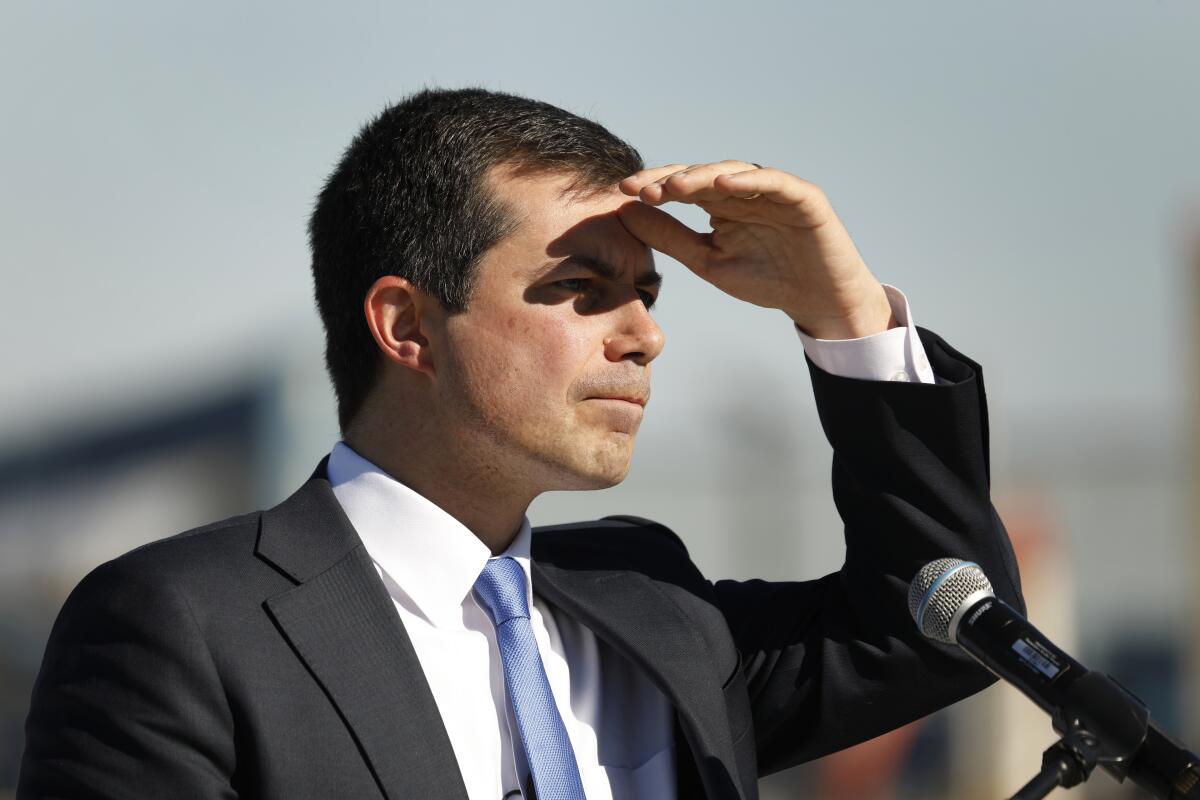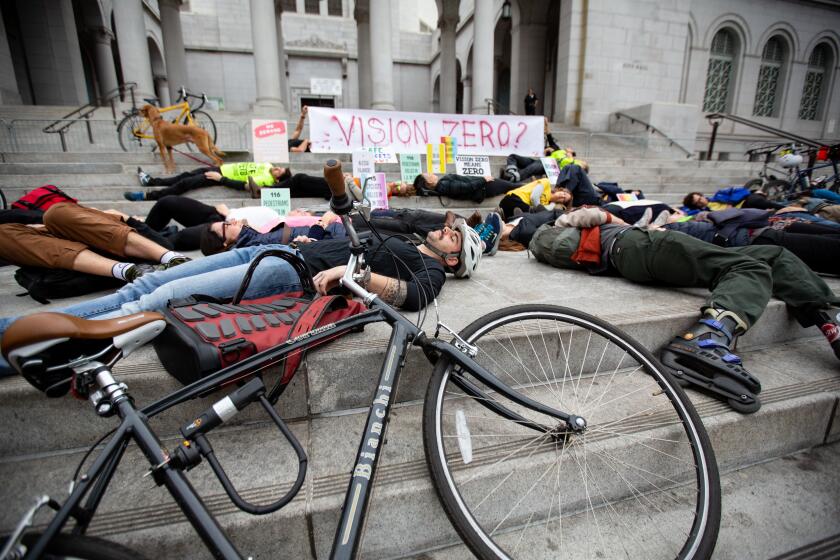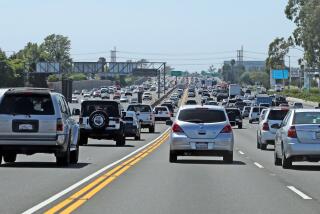Buttigieg unveils a new strategy to combat rising car crash deaths

- Share via
WASHINGTON — Transportation Secretary Pete Buttigieg is vowing to help stem rising traffic fatalities, releasing a broad-based strategy on Thursday aimed at reducing speed, redesigning roads and boosting car safety features such as automatic emergency braking.
In an interview ahead of his announcement, Buttigieg said that new federal data being released next week will show another increase in traffic fatalities through the third quarter of 2021. Those numbers are expected to point to another sizable increase in deaths compared with the same period in 2020, adding to a half-year traffic death toll of 20,160 that already was the highest half-year figure since 2006.
“It doesn’t look good, and I continue to be extremely concerned about the trend,” Buttigieg said.
“Somehow it has become over the years and decades as normal, sort of the cost of doing business,” he said. “Even through a pandemic that led to considerably less driving, we continue to see more danger on our roads.”
To prioritize safety, Buttigieg said his department was embracing a new “safe system” approach urged by auto-safety advocates to bolster initiatives, already underway in several cities, that seek to eliminate fatalities by taking into account the whole system rather than just driver behavior.
Over the next two years, he said, his department would provide guidance as well as $5 billion in grants to states to lower speed limits and embrace safer road design such as dedicated bike and bus lanes, better lighting and crosswalks. When roads become safer for bicyclists and pedestrians, it opens up transit options overall and can lead to fewer dangerous cars on the road, he said.
Traffic deaths climbed again in Los Angeles in 2021, raising doubts about Mayor Eric Garcetti’s program to end such fatalities by 2025.
Money for the grants is included in President Biden’s infrastructure law, which has an additional $4 billion in funding through the Highway Safety Improvement Program.
Citing his experience as mayor of South Bend, Ind., Buttigieg said he envisions cities and states taking interim steps with federal support. He pointed to Hoboken, N.J., which has made roadway improvements such as curb extensions and re-timed traffic signals to give pedestrians a head start in crosswalks.
“Today we commit that our goal is this: zero. Our goal is zero deaths” from traffic, he said Thursday while announcing the national road safety strategy.
“The decision to commit to that goal in a serious way at a national level changes the way cities and towns design roads, changes the way companies build cars, changes the way people drive.”
It urges pilot programs to study and promote greater use of speed cameras, which the department says could provide more equitable enforcement than police traffic stops. Automakers, meanwhile, will be prodded to adopt more crash-avoidance features and publish detailed information about them for consumers on window stickers for new car sales.
There is an epidemic of dying while walking, and it affects people of color and poor people disproportionately
The strategy pledges a shift in approach on the state and local level in part with planned updates to the federal Manual on Uniform Traffic Control Devices, which lays down the requirements for U.S. street markings and design. Among the possibilities is rethinking how speed limits are set. Currently, many cities set limits at whatever 85% of drivers are traveling, essentially letting drivers make the decision.
The National Highway Traffic Safety Administration, a part of the Transportation Department, also plans to move forward on making rules to require automatic emergency braking in all new passenger vehicles, set new standards on car-safety performance by emphasizing features such as lane-keeping assistance and require crash-avoidance information on new car window stickers.
The NHTSA has struggled with a growing backlog of safety rules ordered by Congress that are years overdue, while the new infrastructure law added yet more requirements, such as a federal mandate to automakers to install anti-drunk driving technology. No firm deadlines were specified for finalizing the rules, which the NHTSA can take years to write up.
Traffic deaths began to spike in 2019, and the NHTSA blamed speeding and other reckless driving behavior for the increases during the COVID-19 pandemic. Before then, the number of fatalities had fallen for three straight years.
There have been fewer cars on streets and highways this last year, but more reckless driving and speeding. Two grieving families know the grim statistics all too well.
Cathy Chase, president of Advocates for Highway and Auto Safety, called the department’s strategy a step in the right direction, citing the importance of “swift implementation of identified solutions which have been proven to prevent crashes and save lives,” such as issuing minimum performance standards for automatic emergency braking.
Jennifer Homendy, chair of the National Transportation Safety Board and a strong advocate of the broader “safe systems” approach, also has praised the department’s initial steps but stressed the importance of a sustained effort to get full cooperation from states, communities and automakers.
Last week, Homendy criticized the NHTSA for moving too slowly in removing from its website statistics that suggested that 94% of serious crashes are solely due to driver error; in fact, the agency’s own research describes it as one of several key contributing factors. The NHTSA has since removed the language.
“This is achievable. We may not get to zero crashes, but we could get to zero fatalities, and we could drive down serious injuries considerably,” Homendy told the Associated Press last week. “Their biggest hurdle is, can you get the same commitments from the state departments of transportation, and is the will there with NHTSA? It’s really going to take a big effort.”
More to Read
Sign up for Essential California
The most important California stories and recommendations in your inbox every morning.
You may occasionally receive promotional content from the Los Angeles Times.













